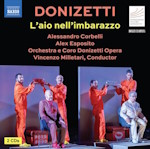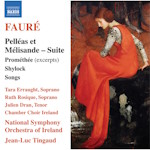Shostakovich: String Quartet No. 12 in D flat major, Op.133 (1968)
Moderato – Allegretto
Allegretto – Adagio – Moderato – Allegretto
Here is perhaps the toughest and most complex of all Shostakovich’s quartets, standing as it does in a position of such crucial importance in his oeuvre as a whole: the progression from the basically diatonic eleventh to the completely atonal opening bar of its successor points all too clearly to the changes which had taken place. This introductory note-row on the cello does faintly compromise itself by implying a perfect cadence into D flat with its last two notes, and indeed it is the eventual head-on conflict with tonality/stability which is a principal source of the tensions engendered later. The mood is one of quiet but noble sadness, that provocative note-row relaxing immediately into pure D flat major and a sustained cantilena which epitomises the dark, vibrant Russian violin sound so characteristic of Dmitri Tsyganov of the Beethoven Quartet (the work’s dedicatee). The alternating between two unrelated tempi brings to mind a similar technique used by Beethoven himself, and here each of the main thematic groups is always associated with its own tempo and metre. And so a change to 3/4 Allegretto for the second subject also introduces a new note-row, the presence of which robs the remainder of the exposition of any clear tonal centre. Although the lilt of a waltz is suggested here the seemingly contrived chromaticism of those themes derived from note-rows gives them a rather awkward angularity, a characteristic far removed from Shostakovich’s earlier melodic style – the lyrical side of his instrumental writing had invariably demonstrated an almost vocal ease and fluency which clearly resulted from the experience of composing songs, choral music, and operas.
The unequal proportions of the two movements are inevitable, given a structure which incorporates scherzo, Adagio, and finale, as well as an expansion, development, and recapitulation of motifs from the shorter first movement. Yet the two parts of the quartet do complement each other in a curiously satisfying way. The timeless calm at the end of the first movement is immediately undermined by flaming Thor-like hammer swings, propelling a germ cell which entirely dominates the “scherzo” section, generating its vital rhythmic impetus. After a dense inferno, featuring thrillingly dissonant double-stops supported by a torrent of note-rows in swirling sul ponticello sextuplets, all the activity eventually winds down, leaving the cello to introduce the Adagio with an impassioned soliloquy; this is punctuated by a muted chant in parallel triads from the other players which gradually assumes equal prominence as a climax is reached. All magically subsides onto a chord of A major, out of which an extraordinary passage emerges with another new note-row played pizzicato; this Moderato section gradually turns out to be a development of the whole work. The pizzicato line is unrelenting; each pluck like a knife stab, twisting the tension to breaking point and exploding into violent chords made up of all twelve pitches. After a reference to the Adagio chant the music looks back even further to the first subject material of the opening movement, reflecting nostalgically on the past before the final great assault is made. Formally we are already witnessing a giant recapitulation of both first movement and “scherzo”: as the germ cell slowly and questioningly comes to life again there begins a long controlled crescendo which is surely one of the most serenely joyful passages Shostakovich ever wrote. What was once crazy and without tonality is now surely, confidently – obsessively even – in D flat major; with the struggle won at last, the quartet goes wild with exultation.
The twelfth quartet is among the few major works of Shostakovich’s final years which are not predominantly dark in tone; indeed, it is as powerful and virile as anything in his entire output, striking a note of genuine heroism which is so sadly absent from much that followed. Such is the final tragedy of the man that never again did he feel quite so moved to express in his music such a tremendous zest for life. Yet not everyone sees the work in this way: for some the end represents a desperate, manic struggle which is ultimately hollow and therefore depressing. As with so many of his earlier “optimistic” conclusions there may well be an ambivalent meaning here: another example of Shostakovich speaking in opposites? But Maxim has said that “My father used the quartet genre for the deepest of his thoughts, for the expression of his most important philosophical conceptions. And in this category I would place the fifteen quartets as a lyrical confession of my father”. So perhaps in the quartets we really should believe what we hear. But each listener must make up his/her own mind.
© Alan George


















